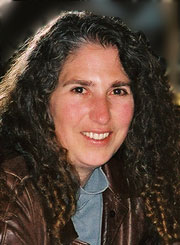
Invited Talks
 |
Nancy Amato |
|
Biography: Nancy M. Amato is Unocal Professor and Interim Department Head of the Department of Computer Science and Engineering at Texas A&M University where she co-directs the Parasol Lab. She received undergraduate degrees in Mathematical Sciences and Economics from Stanford University, and M.S. and Ph.D. degrees in Computer Science from UC Berkeley and the University of Illinois at Urbana-Champaign. Her main areas of research focus are motion planning and robotics, computational biology and geometry, and parallel and distributed computing. She was Editor-in-Chief of the IEEE/RSJ IROS Conference Paper Review Board from 2011-2013, has served on the editorial boards of the IEEE Transactions of Robotics and Automation, IEEE Transactions on Parallel and Distributed Computing, and is an elected member of the Administrative Committee of the IEEE Robotics and Automation Society. She was co-Chair of the NCWIT Academic Alliance (2009-2011), is a member of the Computing Research Association's Committee on the Status of Women in Computing Research (CRA-W) and of the Coalition to Diversity Computing (CDC). She was an AT&T Bell Laboratories PhD Scholar, received an NSF CAREER Award, is a Distinguished Speaker for the ACM Distinguished Speakers Program, and was a Distinguished Lecturer for the IEEE Robotics and Automation Society. She received the 2013 IEEE Hewlett-Packard/Harriet B. Rigas Award, and a University-level teaching award and the Betty M. Unterberger Award for Outstanding Service to Honors Education at Texas A&M. She is a AAAS Fellow and an IEEE Fellow. |
|
|
Using Motion Planning to Study Protein Motions Protein motions, ranging from molecular flexibility to large-scale conformational change, play an essential role in many biochemical processes. For example, some devastating diseases such as Alzheimer's and bovine spongiform encephalopathy (Mad Cow) are associated with the misfolding of proteins. Despite the explosion of structural and functional data, our understanding of protein movement is still very limited because it is difficult to measure experimentally and computationally expensive to simulate. In this talk, we describe how techniques developed for motion planning in robotics have been adapted and applied to model and analyze protein motions and to reason about the structure, flexibility and interactions of proteins and other biomolecules. These techniques adapt sampling-based methods developed for robotic configuration spaces to construct approximate maps of a protein's potential energy landscape which can be used, e.g., to generate transitional motions of a protein to the native state from unstructured conformations or between specified conformations. For example, we show how our map-based tools for modeling and analyzing folding landscapes can capture subtle folding differences between protein G and its mutants, NuG1 and NuG2.
|
|